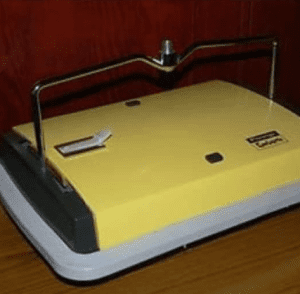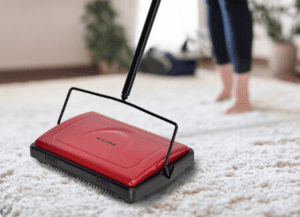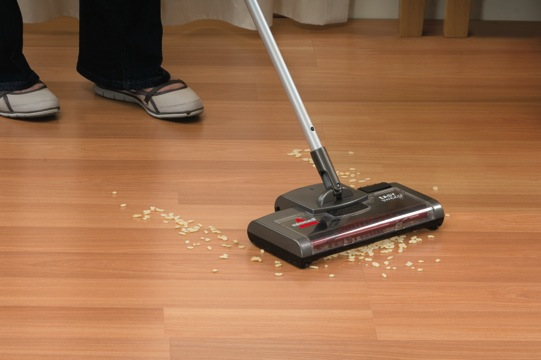The humble carpet sweeper is a remarkable cleaning tool that revolutionized household chores in the 19th century. Before the advent of vacuum cleaners, carpet sweepers became the go-to solution for keeping carpets clean. But who was behind this innovative invention, and how did it change the way people cleaned their homes? In this article, we’ll take a deep dive into the fascinating history of the carpet sweeper, exploring its invention, evolution, and enduring legacy.
The Origins of Carpet Cleaning

Before the Industrial Revolution, most homes had wooden or stone floors that could be easily cleaned with brooms. However, as carpets and rugs became more common and affordable, they introduced a new challenge: how to keep them clean. Unlike hard floors, carpets trap dirt, dust, and debris, making them difficult to maintain with a simple broom. The primary method for cleaning carpets at the time was to hang them outside and beat them with carpet beaters, a labor-intensive process that released dust into the air.
This need for a more efficient cleaning solution paved the way for the invention of the carpet sweeper, a device that could remove dirt from carpets without the strenuous effort of manual beating.
What is a Carpet Sweeper?
A carpet sweeper is a mechanical cleaning device designed to remove dirt and debris from carpets. It consists of a box-like frame with wheels, a handle, and rollers fitted with brushes. As the user pushes the sweeper over the carpet, the wheels drive the rollers, which rotate and sweep up dirt. The collected dirt is deposited into a container within the sweeper, which can be emptied when full. Unlike vacuum cleaners, carpet sweepers do not require electricity, making them quiet, simple, and cost-effective tools.
Before electric vacuums became widespread, carpet sweepers were a popular cleaning solution, especially in households and businesses that needed to maintain a quiet environment or lacked an electric power supply.
The Invention of the Carpet Sweeper
The invention of the carpet sweeper is credited to Melville R. Bissell, a businessman from Grand Rapids, Michigan, who created the device in 1876. Bissell and his wife, Anna, ran a small crockery shop where they constantly dealt with sawdust—a byproduct of unpacking crockery that was often packed in wooden crates with sawdust for protection. Sawdust would get deeply embedded into their shop’s carpets, making it challenging to remove with a standard broom.
Frustrated with this daily struggle, Anna asked her mechanically inclined husband to come up with a better cleaning solution. Melville responded by designing a wooden box with wheels and brushes that could be pushed across the carpet, picking up the sawdust. This initial design laid the foundation for the modern carpet sweeper.
The Rise of Bissell and the Carpet Sweeper’s Popularity
Melville’s prototype worked exceptionally well, and soon, others in the area became interested in the new cleaning tool. Recognizing the potential of his invention, Melville patented the carpet sweeper in 1876 and, along with Anna, began manufacturing it under the brand name “Grand Rapids.”

The couple started small, with local women making the brushes in their homes, while Melville and Anna assembled the sweepers in a room above their crockery store. They then marketed their product by going door to door—Melville selling on one side of the street and Anna on the other.
The Bissells’ carpet sweepers quickly gained popularity, outperforming other models on the market. Competing sweepers were often heavier, less efficient on uneven floors, and created clouds of dust. The “Grand Rapids” sweeper was lighter, easier to maneuver, and had a more effective dust containment system. This success led to the opening of the first Bissell manufacturing plant in 1883.
Anna Bissell: The First Female CEO in America
In 1889, Melville Bissell passed away, leaving Anna in charge of the company. She became the first female corporate CEO in the United States, a remarkable achievement at a time when women had limited opportunities in the business world. Anna proved to be a formidable leader, defending the company’s patents and expanding the Bissell brand internationally.

Under Anna’s leadership, the Bissell Company thrived, becoming a global force in the cleaning industry. She emphasized innovation, quality, and customer satisfaction, which helped cement the brand’s reputation as a leader in carpet cleaning solutions. Anna remained at the helm until her death in 1934 at the age of 87, leaving behind a legacy of entrepreneurship and resilience.
Evolution of Carpet Sweepers
Over the years, the design of carpet sweepers has evolved, incorporating new materials and features to improve performance and durability. Early models were made primarily from wood, but later versions included metal and plastic components, making them lighter and more robust.
In the 1960s, Bissell introduced the Gemini Sweeper, the first two-brush sweeper, which enhanced cleaning efficiency by using dual rotating brushes. This innovation further cemented Bissell’s position as a leader in the cleaning industry. In the late 1980s, the company launched the Big Green Clean Machine, a groundbreaking device that combined deep cleaning power with portable convenience. This model, affectionately known as “Big Daddy,” marked a significant shift toward more versatile carpet cleaning solutions.
Carpet Sweepers Today: Still Relevant and Effective

While vacuum cleaners have largely replaced carpet sweepers in many households, the latter still holds a place in various settings. Carpet sweepers are ideal for quick clean-ups, especially in environments that require minimal noise, such as libraries, offices, and hospitals. They are also favored in areas with limited or unreliable electricity supply. Additionally, many homeowners still appreciate the simplicity and reliability of carpet sweepers for smaller cleaning tasks.
Modern carpet sweepers come in a variety of designs, from compact hand-held models to larger units designed for commercial use. They maintain their core functionality—quietly picking up dirt from carpets—while incorporating modern materials and technology for better efficiency.
Conclusion: The Lasting Legacy of the Carpet Sweeper
The carpet sweeper is more than just a cleaning tool; it is a testament to innovation, persistence, and adaptability. Invented by Melville R. Bissell and brought to market through the hard work of both Melville and Anna Bissell, the carpet sweeper revolutionized how people maintained their carpets. Anna Bissell’s role as a pioneering female CEO in a male-dominated business world also adds a layer of historical significance to this invention.
From its inception in the 19th century to its continued use today, the carpet sweeper has proven to be an enduring and practical solution for carpet cleaning. Its legacy is a reminder of how a simple idea, driven by necessity and creativity, can evolve into a household staple that stands the test of time.